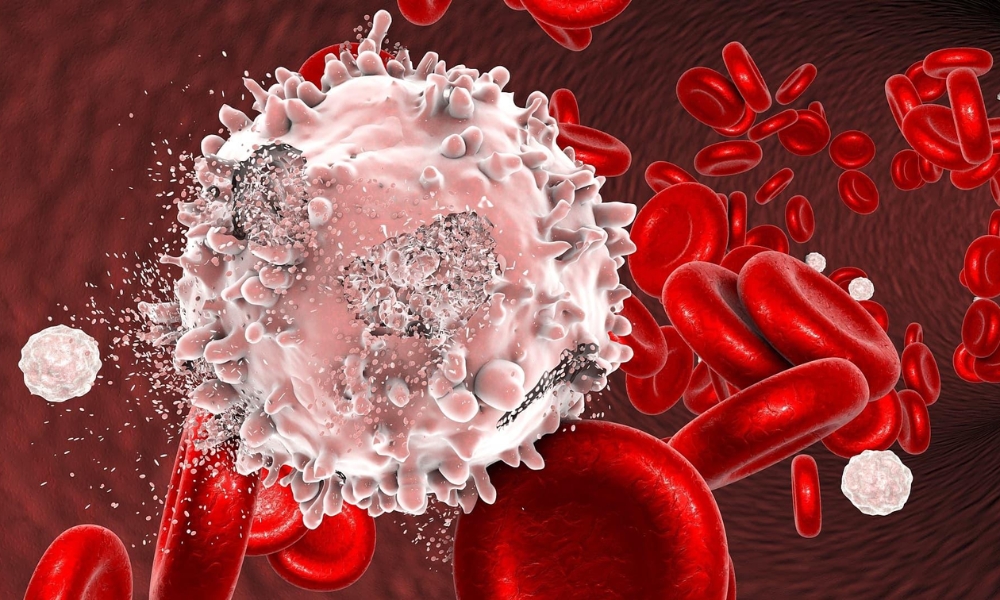Understanding Leukemia in Newborns: A Comprehensive Guide
Leukemia, particularly in newborns, is one of the most common forms of cancer affecting young children. Symptoms such as bruising, bleeding, and difficulty breathing can indicate the presence of this serious illness. Timely detection is crucial for effective treatment. Let’s delve deeper into leukemia, its symptoms, diagnosis, and treatment options so parents can navigate this challenging terrain more effectively.
What is Leukemia?
Leukemia, also known as blood cancer, primarily affects the blood and bone marrow, where blood cells are produced. When a child suffers from leukemia, the bone marrow produces abnormal, immature blood cells, particularly white blood cells, while healthy blood cell production decreases. This results in a host of health complications due to insufficient healthy blood cells.
Types of Blood Cells:
- Red Blood Cells: Carry oxygen throughout the body. A decreased count can lead to anemia, causing fatigue and breathlessness.
- Platelets: Help in clotting blood. A low platelet count increases the risk of bruising and uncontrolled bleeding.
- White Blood Cells: They protect the body against infections. A low count makes a child more susceptible to infections.
There are several types of leukemia in children, with the most common being:
- Acute Lymphoblastic Leukemia (ALL): The most common type in children.
- Acute Myeloid Leukemia (AML): The second most common type.
- Chronic Myeloid Leukemia (CML) and Chronic Lymphocytic Leukemia (CLL): Rare in children.
- Juvenile Myelomonocytic Leukemia (JMML): An uncommon type.
Causes of Leukemia
While the exact cause of leukemia remains unknown, certain risk factors have been identified:
- Genetic Syndromes: Conditions like Down syndrome and others increase the leukemia risk.
- Weakened Immune System: Certain inherited conditions can compromise the immune system, making children more vulnerable to leukemia.
- Family History: A family history of blood cancers may elevate the risk.
- Environmental Exposure: Exposure to radiation or certain chemicals can also be a contributing factor.
Symptoms of Leukemia in Newborns
According to the Vietnam Institute of Applied Medicine, symptoms of leukemia can vary, with acute leukemia typically showing sudden onset while chronic leukemia progresses more slowly. Key symptoms to watch out for include:
- Bruising and Bleeding: Frequent bleeding or easy bruising can be signs of low platelet levels.
- Abdominal Symptoms: Enlargement of the liver or spleen can cause discomfort and loss of appetite.
- Breathing Difficulties: Tumor cells may compress critical respiratory structures.
- Frequent Infections: Immature white blood cells can lead to more frequent and severe infections.
- Swelling: NHL can cause lymph nodes to swell.
- Bone and Joint Pain: Pain resulting from abnormal blood cell production can affect mobility.
- Anemia Symptoms: Fatigue and pallor due to insufficient red blood cells.

Diagnosis and Treatment of Leukemia in Newborns
Diagnosis: A pediatrician will likely conduct a thorough evaluation, which includes:
- Blood Tests: A Complete Blood Count (CBC) helps to evaluate the overall health and detect various disorders, including leukemia.
- Bone Marrow Biopsies: These tests determine how many cancer cells are present in the bone marrow.
- Imaging Tests: X-rays or ultrasounds to examine other organs for swelling or abnormalities.
Treatment: Treatment is unique to the child’s condition and may include:
- Chemotherapy: The primary treatment involving drugs that kill or inhibit cancer cell growth.
- Immunotherapy: Enhances the body’s immune response against cancer cells.
- Targeted Therapy: Medications specifically attack cancer cells without harming normal cells.
- Radiation Therapy: High-energy radiation is used to target cancer cells.
- Stem Cell Transplants: Replaces damaged bone marrow with healthy cells.

Complications and Living with Leukemia
Leukemia can lead to various complications, including serious infections, bleeding issues, and long-term effects, such as growth delays and organ problems. Most leukemia cases can’t be entirely prevented, but minimizing exposure to known risk factors is key.
Tips for Parents:
- Ensure consistent and balanced nutrition, encourage activity wisely, and provide emotional support.
- Stay vigilant for symptoms and ensure regular check-ups with health care providers.
When to Call a Doctor: Parents should contact a pediatrician if their child exhibits fever, worsened symptoms, new signs of distress, or unusual side effects during treatment.

Frequently Asked Questions about Leukemia in Newborns
Is leukemia curable in children? The prognosis varies based on the subtype. For example, approximately 90% of children with ALL respond well to treatment within five years.
How long do children with leukemia live? Survival rates depend on individual conditions; children, especially with ALL, often experience favorable outcomes after five years of treatment.
Is leukemia hereditary? Most leukemia cases are not inherited, but certain genetic mutations can increase risk.
For more insights into related health topics, check these articles:
- 3 Ways to Recover, Retrieve Deleted Videos On TikTok | 3 Ways to Recover, Retrieve Deleted Videos On TikTok
- TikTok will allow users to upload videos up to 10 minutes long | TikTok will allow users to upload videos up to 10 minutes long
- Sharing a video on TikTok – How to make it easily? | Sharing a video on Tiktok – How to make it easily?
- How To Set TikTok Password Extremely Fast, Simple, and Detailed | How To Set TikTok Password extremely fast, simple, and detailed
In Conclusion: Being aware of early symptoms and engaging in proactive health monitoring is vital for managing leukemia in newborns. The more informed and prepared parents are, the better they can support their children through treatment and beyond. If you’ve found this information valuable, be sure to share your insights and continue learning about vital health topics.
Leave a Reply
You must be logged in to post a comment.